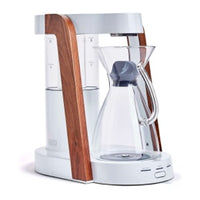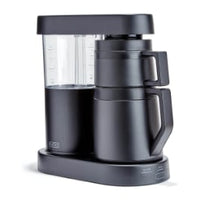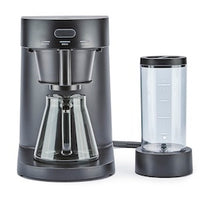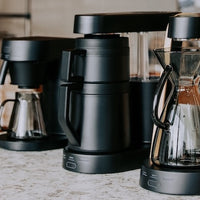The Flavor Difference Between a Fresh Grind and a Fresh Brew
Key Takeaways
-
Freshly ground coffee preserves delicate aromatic compounds that quickly fade after grinding
-
Freshly brewed coffee captures peak flavor before oxidation and temperature changes alter the profile
-
Grinding too far in advance can lead to flat, stale-tasting coffee even with good beans
-
Brewing coffee long after grinding compounds flavor loss
-
Pairing fresh grinding with immediate brewing is the best route to a vibrant, aromatic cup
Coffee lovers often obsess over freshness, but “fresh” can mean different things in different contexts. Some focus on the date the beans were roasted, while others zero in on how soon after grinding the coffee is brewed. The truth is, both the freshness of your grind and the freshness of your brew play critical roles in how your coffee tastes—and understanding the difference can help you make better coffee at home.
Fresh Grinding: Unlocking Aromas at the Right Moment
When coffee beans are ground, their surface area increases dramatically, exposing more of the coffee’s soluble compounds to air. This is great for extraction but also accelerates the loss of volatile aromatic compounds—the very ones responsible for coffee’s complex flavors.
Why timing matters:
-
Aromatics start to dissipate within minutes of grinding
-
Carbon dioxide, which helps drive extraction and crema in espresso, escapes quickly
-
Oils in the grounds can begin to oxidize, leading to rancid notes over time
Best practice: Grind coffee as close to brewing as possible. Even a 15–20 minute delay can noticeably dull flavor.
Common Mistakes with Grinding
-
Grinding for the week: Pre-grinding an entire bag for convenience saves time but costs flavor
-
Inconsistent grind size: Can lead to uneven extraction—some grounds over-extracted (bitter), others under-extracted (sour)
-
Not adjusting for brew method: Grind size should match the method—coarse for French press, medium for drip, fine for espresso
Fresh Brewing: Capturing Coffee’s Peak Moment
Freshly brewed coffee has a window of peak flavor before oxidation and temperature changes alter the taste.
What happens over time:
-
Oxygen interacts with aromatic compounds, flattening the flavor
-
Heat loss changes the balance of perceived sweetness and acidity
-
Bitter compounds can become more pronounced as the coffee cools
This is why even perfectly ground and brewed coffee can taste dull if left sitting for too long.
Best practice: Drink coffee within 20–30 minutes of brewing for the most vibrant flavor. For larger batches, keep brewed coffee in an insulated carafe rather than letting it sit on a hot plate.
How Fresh Grinding and Fresh Brewing Interact
Fresh grinding without fresh brewing—say, grinding and waiting an hour to brew—means you’re brewing with already-degraded grounds. On the other hand, brewing immediately after grinding but letting the coffee sit for hours still robs you of the optimal experience.
To get the best of both worlds:
-
Grind right before brewing.
-
Brew with water at the right temperature (195–205°F / 90–96°C).
-
Enjoy the coffee while it’s still in its flavor peak.
The Sensory Difference: Grind Freshness vs. Brew Freshness
If you want to experience the difference firsthand, try this simple test:
-
Test 1: Grind coffee and brew immediately—taste it fresh.
-
Test 2: Grind coffee, wait 30 minutes, then brew—compare to the first cup.
-
Test 3: Brew coffee fresh but let it sit for 30 minutes before drinking—compare again.
You’ll likely notice:
-
In Test 2, the cup will be flatter, less aromatic, and possibly more bitter
-
In Test 3, the cup will retain some aroma but taste less vibrant and balanced
Why Cafés Nail Both Freshness Points
Professional cafés use on-demand grinders and brew-to-order methods, ensuring both grind and brew freshness. They also control water temperature, maintain clean equipment, and use insulated servers when needed.
At home, replicating these habits can yield café-level freshness without specialized training.
Practical Tips for Maximizing Freshness
-
Invest in a good grinder: Burr grinders provide consistent grind size, which helps with even extraction
-
Store beans properly: Airtight containers, away from light and heat
-
Weigh your beans: Ensures accuracy and consistency in your recipe
-
Preheat your equipment: Keeps temperature stable during brewing
-
Avoid reheating: Reheating brewed coffee exacerbates bitterness and dullness
The Ratio Coffee Approach
A coffee machine from Ratio Coffee is designed to bring out the best in freshly ground beans, thanks to precise temperature control and consistent brewing. Paired with grinding just before use, it helps you capture the full aromatic and flavor potential of your coffee.
Freshness Awareness as a Brewing Skill
Understanding the separate but related roles of grind freshness and brew freshness is a step toward consistently excellent coffee. By controlling both, you can unlock deeper, more complex flavors—and get closer to that perfect cup every time.
Frequently Asked Questions
Can I grind coffee the night before to save time?
You can, but expect a noticeable drop in aroma and vibrancy. If time is short, measure the beans ahead of time and grind in the morning.
How long does ground coffee stay “fresh”?
Flavor loss begins within minutes. After 30 minutes, the difference is noticeable; after a few hours, it’s substantial.
Is it better to brew old grounds fresh or fresh grounds later?
Fresh grounds brewed later are still preferable to old grounds brewed immediately, but the best results come from fresh grinding and immediate brewing.
Does water temperature affect how freshness impacts flavor?
Yes—brewing too cool or too hot can amplify flaws caused by stale grounds or sitting coffee.
Are there any brewing methods more forgiving of older grounds?
Cold brew is slightly more forgiving since it extracts over many hours, but flavor is still best with fresh grinding.
 Ratio Eight S2
Ratio Eight S2
 Ratio Eight Original
Ratio Eight Original
 Ratio Six
Ratio Six
 Ratio Four
Ratio Four
 Compare Machines
Compare Machines






